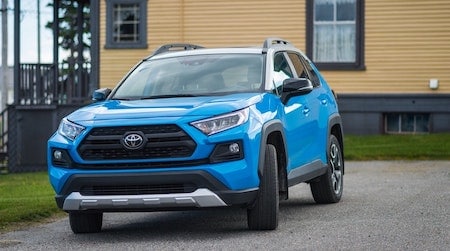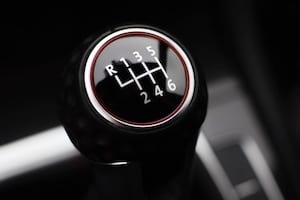As I did my best to help my brother prepare for his drivers test, parallel parking came up as one of the more difficult parts of the test. Parallel parking may seem like it is going to be the most difficult part of the exam. It will not be overly difficult, but a bit of concern is normal and can help you to be motivated to study and prepare.
Here is a table as a comprehensive resource indicating if parallel parking is required on the drivers exam in your state as well as the amount of space allotted if specified.
Parallel Parking on the Drivers Test – State Requirements
Most states require that you be able to parallel park to show you know how to maneuver your vehicle, as this is a basic skill that you can learn easily and should know how to do. Although many states do not include it in their driver’s test and even some that do, skip it on occasion. But best to be prepared. Here you can see if your state includes parallel parking on their drivers test and a space allotted if specified:
| State | Parallel Parking Required on Drivers Test (Yes/No) | Space Allotted for Parallel Parking |
| Alabama | No | N/A |
| Alaska | Yes | A huge space with cones |
| Arizona | Yes | 8′ x 27′ |
| Arkansas | No | N/A |
| California | No | N/A |
| Colorado | No | N/A |
| Connecticut | Yes | Not Specified |
| Delaware | Yes | Not Specified |
| Florida | No | N/A |
| Georgia | Yes | 10′ x 22′ |
| Hawaii | Yes | Not Specified |
| Idaho | Yes | Not Specified |
| Illinois | No | N/A |
| Indiana | Yes | Not Specified |
| Iowa | Yes | Not Specified |
| Kansas | No | N/A |
| Kentucky | Yes | 25′ long |
| Louisiana | Yes | Not Specified |
| Maine | No | N/A |
| Maryland | No | N/A |
| Massachusetts | Yes | Not Specified |
| Michigan | Yes | Vehicle length plus 6 feet |
| Minnesota | Yes | 25 feet |
| Mississippi | No | N/A |
| Missouri | Yes | 7′ x 25′ |
| Montana | Yes | Not Specified |
| Nebraska | No | N/A |
| Nevada | No | N/A |
| New Hampshire | Yes | Not Specified |
| New Jersey | Yes | 8′ x 25′ |
| New Mexico | Yes | Not Specified |
| New York | Yes | Not Specified |
| North Carolina | No | N/A |
| North Dakota | Yes | Not Specified |
| Ohio | No | N/A |
| Oklahoma | Yes | N/A |
| Oregon | No | N/A |
| Pennsylvania | Yes | 8′ x 24′ |
| Rhode Island | Yes | Not Specified |
| South Carolina | Yes | Not Specified |
| South Dakota | No | N/A |
| Tennessee | No | N/A |
| Texas | Yes | Not Specified |
| Utah | Yes | Not Specified |
| Vermont | Yes | Not Specified |
| Virginia | No | N/A |
| Washington | Yes | 9′ x 19′ |
| West Virginia | Yes | Not Specified |
| Wisconsin | Yes | Not Specified |
| Wyoming | No | N/A |
Some states specify very clearly how much space you are allotted to parallel park while others don’t specify a distance at all. It varies from state to state and can even depend on the person testing you.
The test is at the examiners discretion.
What is the average amount of space allotted for a parallel parking spot in a driving test?
25 feet by 8 feet is the average space allotted for a parallel parking space in a driving test. This average comes from all of the states that provide specific dimensions. 25′ x 8′ is the best size to set up cones to practice parallel parking to prepare for the drivers test.
What if the examiner asks me to parallel park in a space that is too small?
If you are asked to park in a space that is too small for your vehicle, approach the parking space, begin to back into it, and before you bump any cones or cars it will become apparent that the space it too small and you will be allowed to move on.
You can also tell the examiner that the space is too small and can find a bigger space to park in.
The examiners aren’t there to trick you, or demand perfection. They are just looking for you to prove that you can control your vehicle and know how to drive safely.
When I took my test, I had an old very long car with a poor turning radius. I was told to park in a parallel parking spot. I said my car would not make it, but I was told to try. I lined up, backed in, and because I had performed the maneuver properly, but the front of the car clearly was unable to clear the car in front. I was instructed to move on, and I had passed.
Will I have to park between real cars on my driver’s test or cones?
Most states that require parallel parking on the exam use cones in place of cars. Some driving tests may allow the driving examiner to ask you to park in a real parking space on the side of the road.
What vehicle will allow me to parallel park the easiest on my driver’s test?
The best vehicle to use for parallel parking on drivers test is one with a high position for the driver, a large rear window, no rear trunk, and a short wheelbase. Using a car such as a Rav4 or Isuzu MU-X, Honda CR-V, or something similar will give you the biggest advantage to easily parallel park.

Details Provided by Some States for Parallel Parking on Driver’s Test
For the unspecified parking space sizes, I contacted the DMV in each state asking for the dimensions of the parallel parking spaces and have included all that I have heard back from. I hope this information has been helpful! Take your time, and don’t stress it. If you feel like you need more practice, then go out and practice some more before your exam. Here are extra details from the states that provide them:
Arizona specifies the space for a required 3 point turn conducted off the street in a parking area of 72′ x 56′ and does not state a parallel parking test is required.
California does not require you to parallel park on your drivers test but you do have to pull up alongside a curb and back up in a straight line.
Connecticut requires the driver to “be able to park in and exit any style parking space. You should be able to park in and exit any style parking space. You should be able to drive or back into a perpendicular parking space from the left or right. You must be able to ark next to a curb in front of, behind, or between cars. You should know the proper way to park on a hill.” Cited from Connecticut government website.
Delaware will require you to show that you know how to parallel park, make a three point turn, reverse 2-point park (pass the parking space and back into it) and back up 50 feet.
Georgia requires you to be able to park midway between two standards so that your car is not more than 18 inches from the curb. And the standard parallel parking dimensions in the drivers test are 10′ x 22′.
Iowa standards require to describe and perform the correct procedure for parallel, angle, and perpendicular parking.
Indiana does not specify much about the parallel parking requirements but you can study up and read more on their Driving Test Website.
Louisiana states they require the ability to parallel park on the drivers test but more often than not, this portion is skipped on the driver’s test.
Kentucky specifies that you will be required to park in a space that is 25 feet long and parallel park within 12 inches of the curb. We assume that the width of the parking space is that of a parked car (approximately 8 feet). Read more on the official Kansas website.
Maryland removed the requirement to parallel park in 2015.
Missouri specifies that they will test you on these things in your parallel parking test: The position of your vehicle before backing, whether or not you bump into the space markers, moving into the space smoothly and at the right speed, parking no more than 18″ from the curb, parking near the center of the space, park within 2 minutes, turning the wheels in the correct direction for parking, checking traffic and signaling before leaving the space. Read more on the Missouri government website.
Michigan seems to have the most logical determination of the dedicated amount of space to parallel park. They clearly state that the size of the space is determined by adding 6 feet to the length of your vehicle. Read about it on the Michigan Driving Test Guide.
Minnesota responded to my inquiry informing me the parallel parking space is 25 feet. I could not find anywhere online where they specified a parallel parking space size.
Nevada eliminated parallel parking from the skills test as of Jan. 13, 2020.
New Hampshire requires the demonstration of parallel parking but 3 out of 4 people that recently took the drivers test said they did not have to parallel park. Evidently it depends on the DMV and the driving examiner.
Oklahoma, many people have said recently that the parallel parking was not even part of their drivers test and those that did said they had ample room in front of and behind them in the parking space. Even if you fail the parallel parking, it is only 5 points out of 100 so you can still pass.
Pennsylvania says most parallel parking spaces will have a standard length of 22 to 26 feet and the width is around 8 feet although does not indicate that parallel parking is required on the test.
Utah requires parallel parking on their drivers test as well as parking on an uphill or downhill slope. Not parallel parking but just pulling up to the curb. Apply the parking brake, then shift to park, and turn the wheels into the curb.
Washington requires parallel parking to their drivers test the same day that I am writing this article. They indicate that the parking can take place on the street with real cars or in a parking lot with cones.
West Virginia does not specify the amount of room allotted in the parallel parking portion of the driver’s test but they do indicate that you should be prepared to be able to parallel park on the right side OR left side of the road! This would be tricky for anyone not used to parking on the left side of the road and should be practiced beforehand. West Virginia provides a very comprehensive guide for the Drivers Test and could be a good resource to study.


